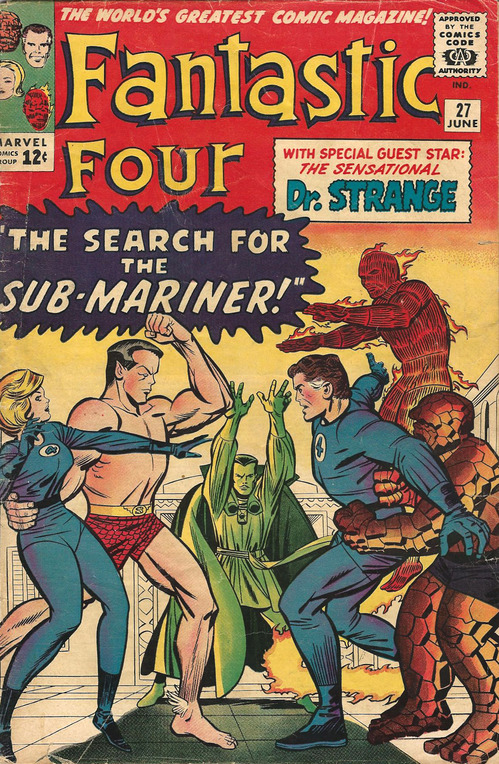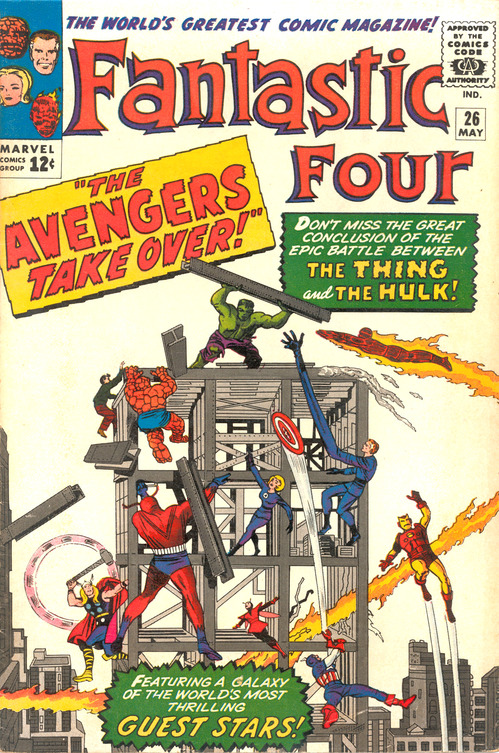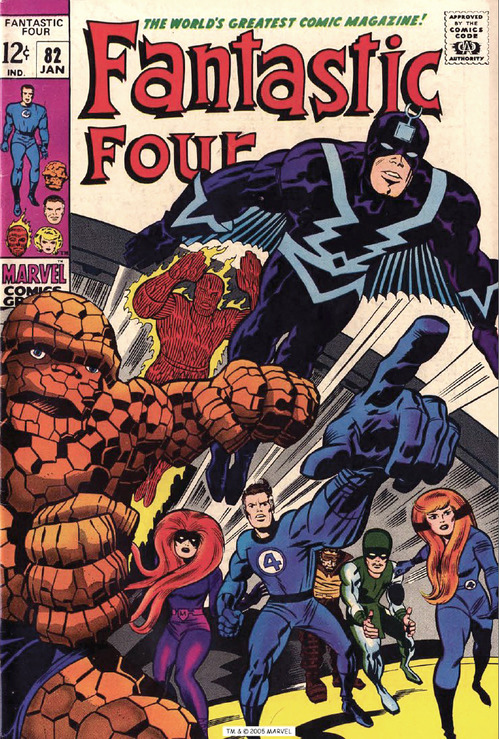Three Ways Stan Lee and Jack Kirby’s Fantastic Four Laid the Blueprint for Our Superhero-Centric World
The critical consensus is that the new rebooted Fantastic Four movie, well, sucks. I’m hoping the critics are wrong. On paper, it looks like a promising take on 2004’s young, sci-fi-infused Ultimate Universe version of the FF from Brian Michael Bendis, Mark Millar and Adam Kubert. It can’t be worse than previous movie versions, especially this one. Can it? Can it?
Even if this movie descends to Gigli-level disaster and terrible FF movies come out every 10 years till the sun blows up, respect must be paid to the source material. In the revolutionary first 102 issues of The Fantastic Four (1961-1970), writer Stan Lee and writer/artist Jack Kirby churned out new ideas and characters at an unprecedented clip, while reinventing superheroes, building the Marvel Universe, and setting the stage for our present superhero-saturated world. Empowered cosmonauts Ben Grimm, Reed Richards, Sue Richards and Johnny Storm may feel like third-tier heroes these days, but they’re called Marvel’s First Family for a reason. Without them, there would be no Spider-Man, Hulk, Avengers or X-Men, and superheroes might be as popular as cowboys today. (Also, Stephen Colbert would never have made a web video wearing Galactus antlers.)
Here are three distinct ways the FF created the blueprint for the Marvel Universe and beyond.

Fantastic Four #27 Cover Art by Jack Kirby
The FF Were Down-to-Earth Heroes with Relatable Problems
This point has been beaten to death with Thor’s hammer over the years, but with good reason. The humanity of the FF was something completely different from the reigning heroes over at DC at the time, where godlike icons were accompanied by superpets, talking gorillas and general absurdity (not that there’s anything wrong with that). The DC pantheon was a lot of fun, but a little inhuman.
By contrast, the FF’s struggles were intimate and mortal, despite their otherworldly powers. Johnny Storm once let former villain and paramour Medusa escape, due to thinking with his little torch. Ben Grimm reacted to his fate as an organic rock monster as anyone would: with anger. Sue Storm had a long flirtation with the semi-deranged, scantily clad Namor the Sub-Mariner. While Galactus threatened to eat the planet, Reed Richards paused to shave. The whole bunch were almost evicted from the Baxter Building. All of it—particularly the family dynamic was relatable on a level not seen thus far in superhero comics, and that relatability became the Marvel trademark.
Without the success of the FF, Lee would likely not have rolled the dice with other vulnerable heroes such as Spider-Man, the X-Men and Daredevil. The terrific Netflix Daredevil series—which did such a great job of showing the layers of Matt Murdock as a lawyer, vigilante, blind man and Catholic—feels a long way from the 1961 space flight of the Richards clan. But such a vulnerable, multi-dimensional character would not exist without Lee and Kirby’s creations. Comics continued to be myths, but now the myths were far more human.![]()

Fantastic Four #26 Cover Art by Jack Kirby
-

-

-

-

-

-

-

-

-

-

-

-

-

-

-

-

-

-

-

-

-

-

-

-

-

-

-

-

-

-

-

-

-

-

-

-

-

-

-

-









































